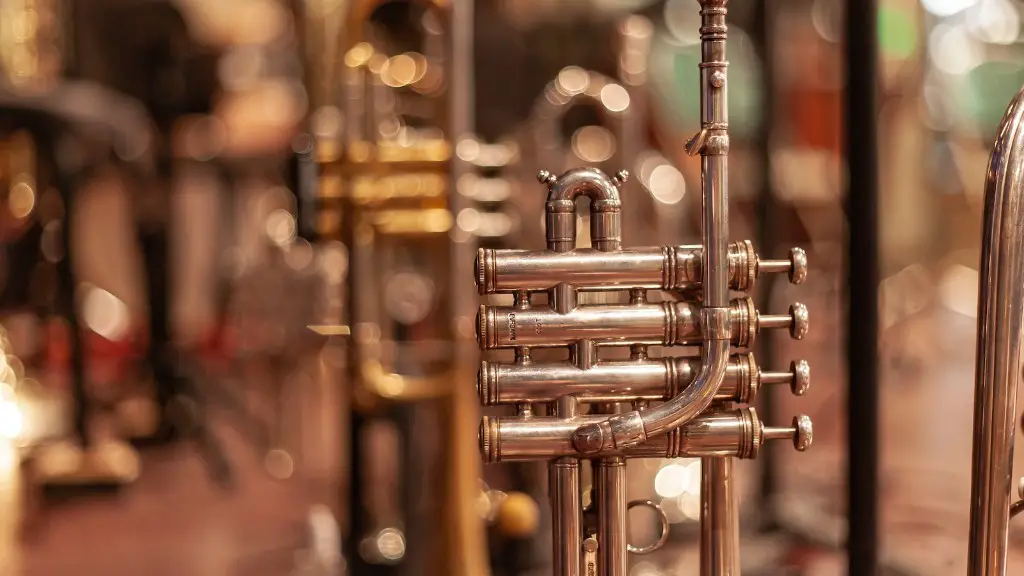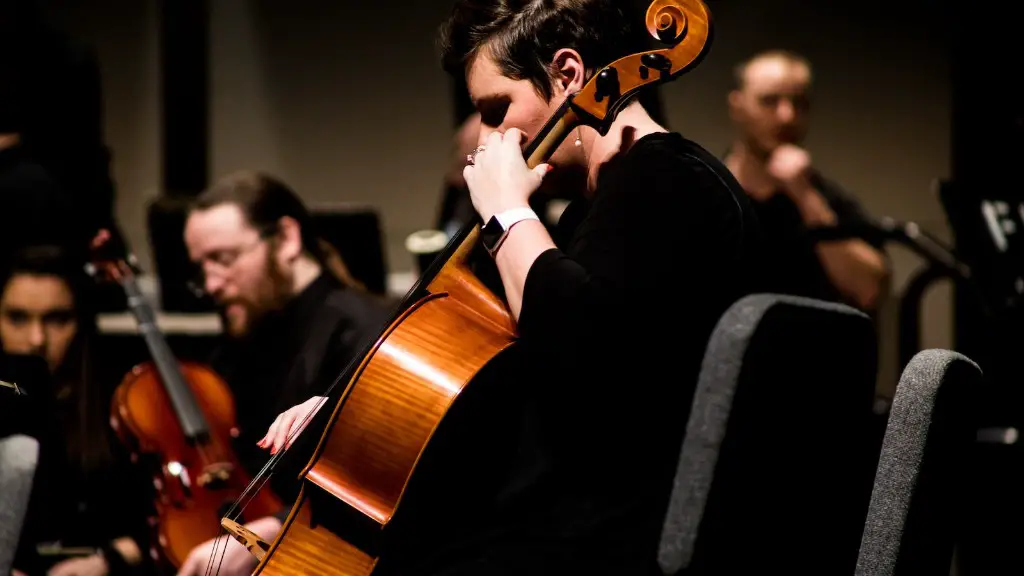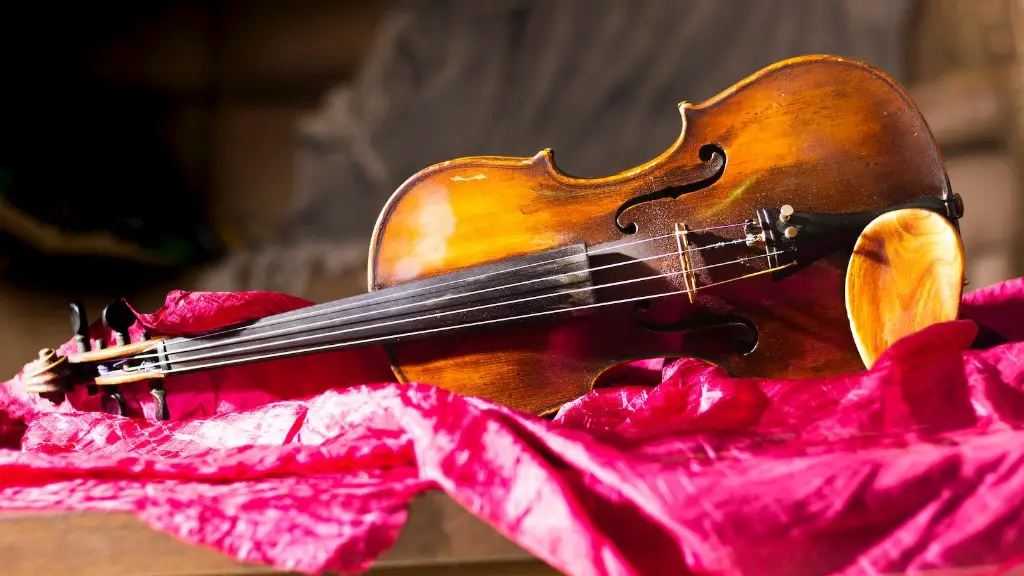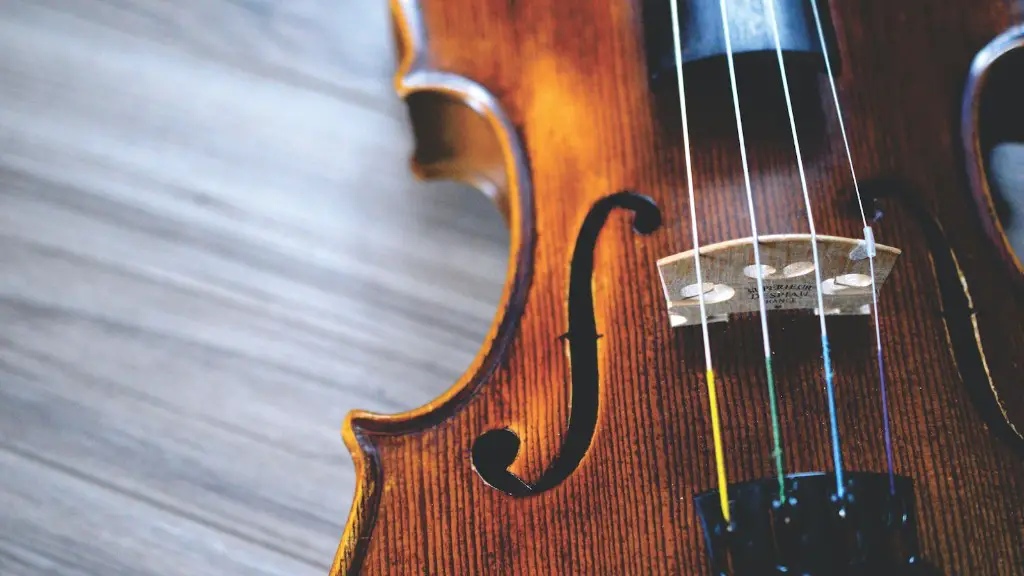The trumpet is a brass instrument that has been used for centuries to produce beautiful and powerful music.
It is a type of wind instrument that works by vibrating the player’s lips as they blow air through the mouthpiece. The vibration of the lip muscles creates a buzz of air, which then passes through the trumpet’s bell and produces sound. The player can also change the length and width of their lips to create different pitches and tones. In addition to playing notes, players can also use their breath and tongue to create effects such as slurs and glissandos.
The trumpet produces sound when air is pushed through valves located on the instrument, which vibrate a column of air inside the tube. As this column of air vibrates, it produces different frequencies depending on how much air is pushed through each valve.
The trumpet is an incredibly versatile instrument that can produce a wide range of sounds from low notes to high-pitched melodies. By varying their breath and embouchure, players can create rich harmonies or intense solos. No matter what style of music you are playing, the trumpet will provide you with an amazing sound experience!
The Role of the Bell in Sound Production
The bell of a trumpet is an essential element in sound production. It amplifies the vibrations created by the lips into a musical note. The larger the bell, the louder and longer lasting sound it produces. The bell also helps to control the focus and direction of the sound by helping to shape it as it travels outward. Additionally, it adds resonance and depth to the tone, giving it a full and rich sound.
The bell’s shape also plays a role in tone quality. Different bells can produce different tonal qualities, such as warm or bright tones, depending on their size and shape. Trumpets with smaller bells tend to have a brighter sound while those with larger bells have a warmer tone. Similarly, different mouthpieces can also have an effect on tone quality as they change the way air is delivered through the instrument.
Overall, trumpet bells are key components that help produce dynamic and enjoyable sounds from this instrument. They contribute to both volume and tonal quality, allowing trumpeters to create music that has great impact whether playing solo or accompanying other instruments. With careful attention to trumpet selection and maintenance, players can ensure that their instrument will always produce beautiful music with an impressive range of tones.
Air Pressure for Sound Production in Trumpets
The trumpet is a brass instrument that produces sound through the vibration of air particles. This vibration is created by the player’s lips and the pressure of air they generate when they blow into the instrument. The vibrating air then moves through the trumpet’s tubing, which amplifies and modifies the sound before it comes out of the bell. The air pressure produced by the player’s lips is essential for creating sound on a trumpet.
When playing a trumpet, changes in air pressure are used to produce different notes and tones. The player’s lips act like a valve, controlling how much air passes through them. When they press their lips together, less air passes through, creating higher notes; when they pull their lips apart more, more air passes through creating lower notes. Different combinations of lip pressure and breath control can be used to play different notes, as well as create different effects like vibrato or slurs.
Instruments like trumpets rely heavily on air pressure for sound production. Without it, there would be no sound coming from the instrument. That is why an important part of learning to play a trumpet is developing control over one’s breathing and lip muscles to create specific pressures that will produce desired sounds.
How a Trumpet Produces Sound
Sound waves are produced when air is pushed through a narrow tube, such as the one found on a trumpet. The vibration of the trumpet’s valves and slides create pressure changes in the air, which causes sound waves to form. As the player moves their lips to produce a note, they create different levels of pressure in the tube, which causes different sound waves to be created. These sound waves then travel out of the trumpet, allowing us to hear the music.
The shape and length of the tube also affects how a trumpet produces sound. The longer and narrower the tube is, the lower pitch it will produce. Conversely, shorter tubes with wider openings will produce higher pitches. As well as this, adjusting valves and slides can also change the pitch of notes being played. The combination of these factors creates beautiful music from a trumpet.
Valves and the Trumpet’s Tone
Valves play a critical role in producing the trumpet’s signature sound. By pressing down on valves, players can vary the length of their trumpet’s tubing. This changes the instrument’s pitch and timbre, giving it a range of different tones. The valves also control the amount of air that passes through the trumpet, which affects its volume. When all three valves are pressed down, it creates a warm, mellow sound; when none are pressed, it produces a bright, energetic tone.
The way players use their hands and tongue to manipulate the valves also affects their trumpet’s tone. For example, if they press down all three valves at once, then release them quickly in succession, it creates a ‘valve-tonguing’ technique known as ‘double-tonguing’. This produces a unique sound that has become popular in jazz music. Experienced players can use valve-tonguing to produce even more complex sounds.
Ultimately, proper use of valves is essential for controlling the tone of a trumpet. Players who understand how to manipulate them can produce a wide variety of sounds from warm and mellow to bright and energetic. With practice and dedication, they can even master techniques like double-tonguing for an even richer musical experience.
Adjusting Embouchure and Tone Quality of Trumpets
The sound of a trumpet is produced when air is forced through the instrument’s mouthpiece. The player controls the tone quality and volume of the sound by adjusting their embouchure – the position of the lips, muscles and jaw. When done correctly, a player can produce a variety of different sounds. A tight embouchure produces a bright, clear tone while a looser embouchure produces a mellow sound. The amount of air pressure used to produce the sound also has an effect on the tone quality. With more pressure, the sound will be louder and brighter; with less pressure, it will be softer and darker. Furthermore, adjusting how much lip is covering the mouthpiece can also affect the tone quality; more lip coverage will produce a brighter tone while less coverage will make it darker.
To further refine their sound, musicians must practice regularly and become familiar with how their instrument responds to various adjustments in their embouchure. With practice, they can learn to manipulate their embouchure to achieve different sounds or create subtle nuances in their playing. Through this process they can master their own unique trumpet playing style that will set them apart from other musicians.
Ultimately, achieving a desired tone quality on trumpet requires both skill and patience; but with consistent practice any musician can become proficient at controlling their embouchure to get exactly the sound they want.
How a Trumpet Produces Sound
A trumpet is a brass instrument and is one of the most popular instruments in orchestras and bands. The trumpet produces sound by using the stream of air that comes from the player’s mouth and blowing it into the instrument. The player then presses down on certain valves with their fingers, which causes the length of the tube to change and creates different notes. The longer the tube, the lower-pitched note will be produced. Additionally, pitch is affected by how quickly or slowly air is pushed through. For example, playing a note quickly will produce a higher pitched sound than playing it slowly. A trumpet player can produce up to 40 different notes with proper technique and skill.
The trumpet is known for its loud and powerful sound, but it can also be used to create soft, gentle tones when played correctly. It’s often used to play a melody or solo part in jazz music as well as in classical music or fanfares. To get the most out of their trumpet playing, musicians must practice regularly and develop their technique in order to produce high-quality sounds.
To Sum It All Up
The trumpet is an instrument that produces sound through the vibration of the player’s lips. The mouthpiece of the trumpet vibrates in response to the air pressure created by the player’s breath, causing the air inside of the instrument to vibrate and produce sound. To produce different notes, players use their embouchure to change the shape of their lips, which changes how the air is released and affects its frequency. The length and size of different parts of the trumpet also affect how much sound it can produce and what notes it can play. By changing their embouchure, players can create a wide variety of sounds on a trumpet.





